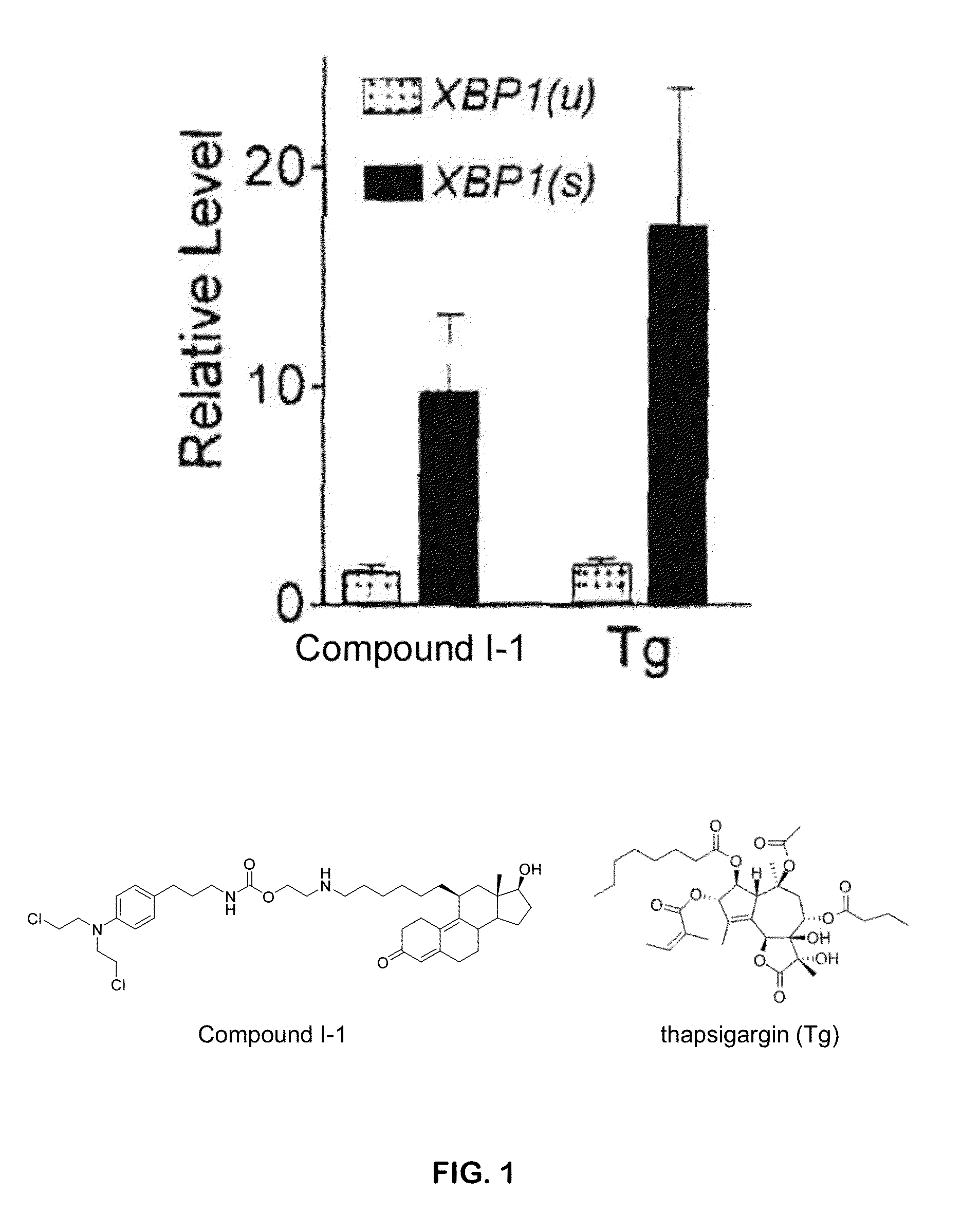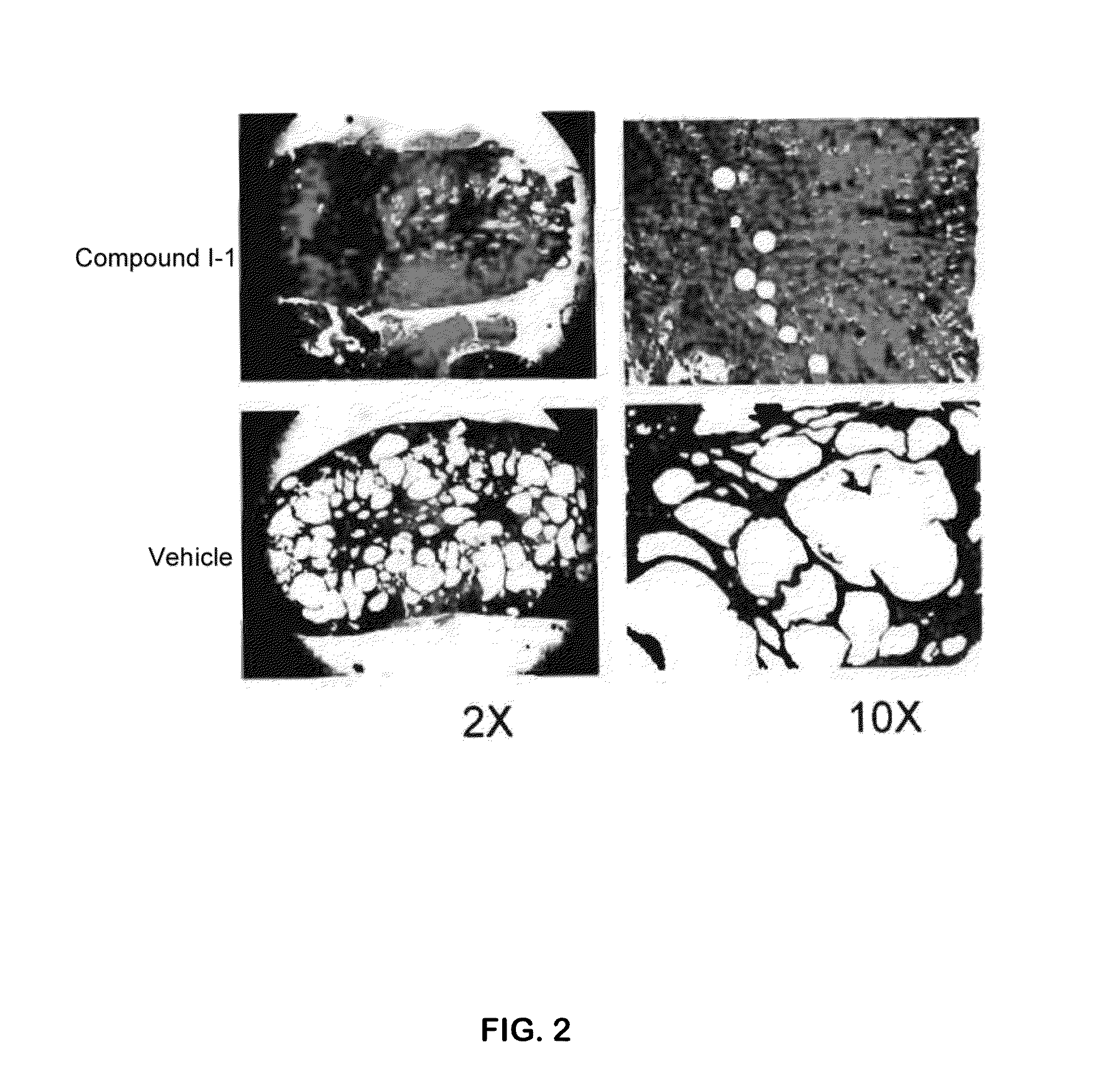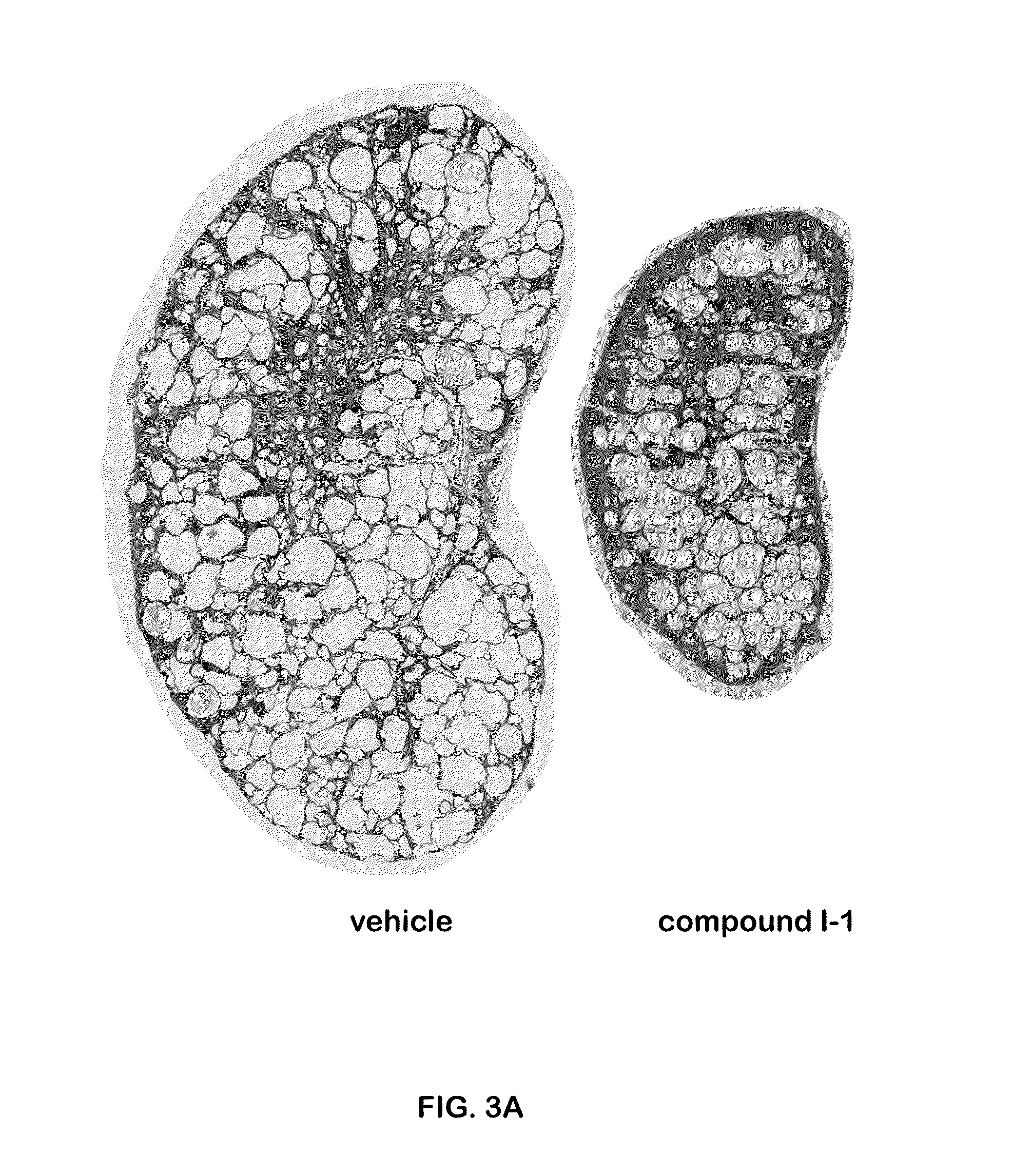Methods for treating polycystic kidney disease and polycystic liver disease
a kidney disease and liver disease technology, applied in the field of kidney disease and liver disease treatment methods, can solve the problems of kidney failure, kidney cysts in the liver, kidney function reduction, etc., and achieve the effects of reducing or avoiding symptoms or causes of the condition, reducing or minimizing one or more symptoms, and reducing or minimizing symptoms
- Summary
- Abstract
- Description
- Claims
- Application Information
AI Technical Summary
Benefits of technology
Problems solved by technology
Method used
Image
Examples
example 1
Preparation of the Compounds
[0249]Any of the compounds described herein can be prepared by routine methods known in the art. For example, one can use synthetic chemistry transformations (including protecting group methodologies), e.g., those described in R. Larock, Comprehensive Organic Transformations, VCH Publishers (1989); T. W. Greene and P. G. M. Wuts, Protective Groups in Organic Synthesis, 3rd Ed., John Wiley and Sons (1999); L. Fieser and M. Fieser, Fieser and Fieser's Reagents for Organic Synthesis, John Wiley and Sons (1994); and L. Paquette, ed., Encyclopedia of Reagents for Organic Synthesis, John Wiley and Sons (1995) and subsequent editions thereof. One exemplary synthesis of the compounds described herein is reported in Fedeles et al., Journal of Biological Chemistry, 2011, 286(39) 33910-33920 and in U.S. patent application publication, US 2006 / 0019936.
example 2
[0250]Compound I-1 is an activator of the XBP1 (X-box binding protein 1) branch of the UPR (unfolded protein response) as evidenced by endoribonucleolytic processing of XBP1
[0251]Endoribonucleolytic processing of XBP1 in HeLa cells were performed according to methods known in the art. See, e.g., U.S. Patent Application Publication, US 2004 / 0170622, which is incorporated herein by reference. In an exemplary set of experiments, the HeLa cells were treated with compound I-1 at 5 μM or thapsigargin (Tg) at 200 nM, or not treated with either compound. Levels of spliced and unspliced XBP1 transcript relative to untreated cells were measured. The results indicate that compound I-1 is a potent activator of the XBP1 branch of the UPR (FIG. 1).
example 3
Compound I-1 was Effective in Preventing Cyst Formation in a PKD1 Knockout (PKD1 KO) Mouse Model
[0252]PKDflow / flax: Pkhd1Cre mice were used. Neonate mice were treated IP (intraperitoneally) daily, with compound I-1 at a dose of 10 mg / kg starting on day 10 post birth for 7 days. The results shown were from day P16 (the 16th day post-birth). The staining was hematoxylin and eosin (H&E) stain. The results are shown in FIG. 2. Compared to the vehicle-treated mice, the mice treated with compound I-1 showed significantly fewer cysts, which translated into kidney sizes closer to normal, smaller average cyst size, significantly lower cystic index (a score based on histologic evaluation), and a significantly improved kidney function, as evidenced by lower BUN (blood urea nitrogen).
PUM
| Property | Measurement | Unit |
|---|---|---|
| temperature | aaaaa | aaaaa |
| diameter | aaaaa | aaaaa |
| diameter | aaaaa | aaaaa |
Abstract
Description
Claims
Application Information
 Login to View More
Login to View More - R&D
- Intellectual Property
- Life Sciences
- Materials
- Tech Scout
- Unparalleled Data Quality
- Higher Quality Content
- 60% Fewer Hallucinations
Browse by: Latest US Patents, China's latest patents, Technical Efficacy Thesaurus, Application Domain, Technology Topic, Popular Technical Reports.
© 2025 PatSnap. All rights reserved.Legal|Privacy policy|Modern Slavery Act Transparency Statement|Sitemap|About US| Contact US: help@patsnap.com



